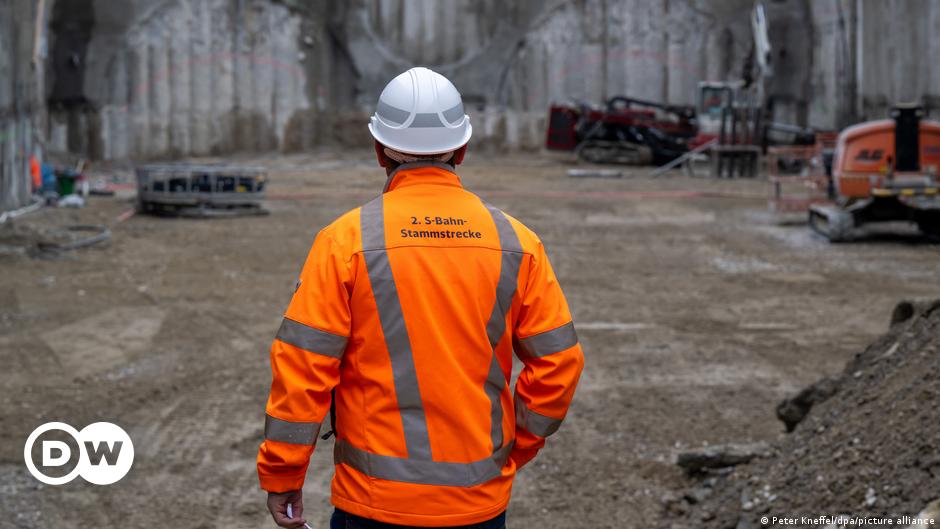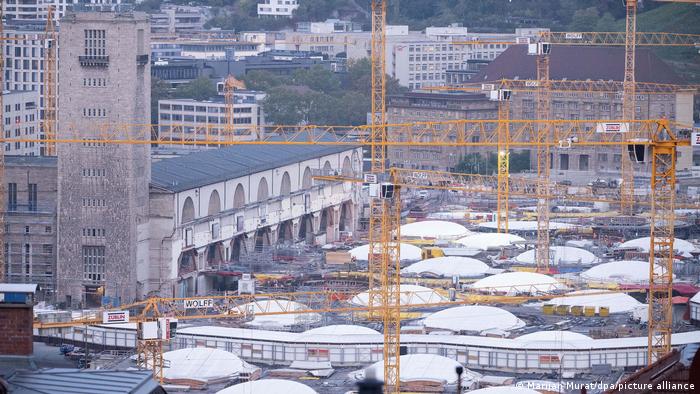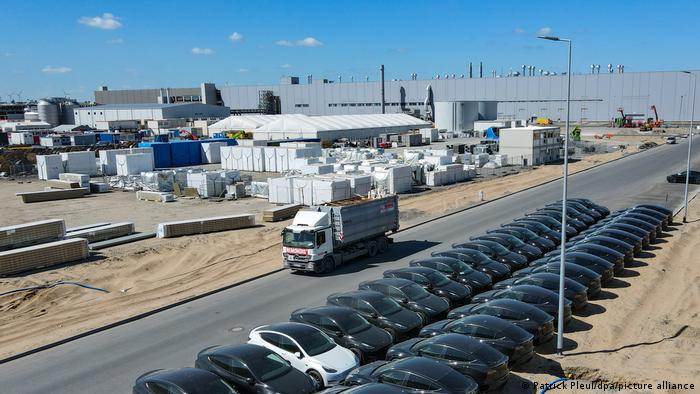Anyone who plants a tree in their garden can, in the simplest case, use the excavated earth in the immediate vicinity. However, when Deutsche Bahn (DB) builds a tunnel, such masses accumulate – several million tons per year – that they usually end up in landfills. But sand, gravel, clay and natural stone could in many cases be used elsewhere, which is why DB sells the mineral raw materials from construction projects on a digital marketplace with its in-house start-up Erdpool.
On the one hand, it’s about bringing the material into the economic cycle and stuff like that to conserve resources , says civil engineer Katrin Fischer, who developed the project with a team. “We also face the problem that we can’t get the material disposed of,” says Fischer. Many landfills are full. On the other hand, the railway saves high disposal costs. So the whole thing is not selfless.
Procedure for large projects
In the case of the large-scale Karlsruhe-Basel project, you can clearly see how it works. These would be done anyway to analyze the soil, says Fischer. The samples are examined from an environmental point of view to determine how high the arsenic content is. “Bad material has to go to the landfill.”
The experts can use the drill cores to identify the material they are dealing with: a few meters are very loamy, the layer underneath consists mainly of stones. The soil along the Karlsruhe-Basel route is not polluted, says Fischer. It was different at Stuttgart 21. “It wasn’t marketable.”
“Material flow management for cost reasons alone”
In principle, the idea is known. “For cost reasons alone, our large companies operate material flow management on their different and possibly even on the same construction site,” explains a spokeswoman for the German Construction Industry Association.
During the construction of Berlin Airport BER, for example, excavated material was removed from one location and reused elsewhere in order to be able to make flat runways out of the hilly terrain.
Autobahn GmbH, which, like Deutsche Bahn, is responsible for large construction projects, states that the top priority is to use the excavated and drilled material within the planned construction project.
Environmental issues, transport and disposal costs
According to the 13th monitoring report of the Circular Economy Construction Initiative, almost 86 percent of the “soil and stones” area is recycled – mainly for filling excavations and in landfill construction. According to the association spokeswoman, whether and how the material can be recycled also depends on whether it is possible at all in terms of environmental law and structural engineering and whether it can be presented at “reasonable” transport and disposal costs.
Because the disposal of mineral construction waste is becoming more and more complicated and expensive, construction is becoming more expensive, according to a position paper by the Baden-Württemberg construction industry. In addition, the association complained, among other things, that there was too little planning, especially with regard to the disposal of the material, too few recycling options and landfills, and that public clients refused to use recycled building materials.
Marketing platforms for excavation
The Erdpool railway project has been in existence for almost two years. From the point of view of the construction industry, it is a marketing platform like those offered by others – such as Mineral Waste Manager and Schüttflix. About 15 to 20 percent of the excavation is marketable across all earth pool projects, explains co-initiator Fischer. According to the DB, it has over 150 customers in an international network.
These are, for example, the brick and cement industry, says Fischer. Sometimes old gravel pits could also be filled up or renatured terrain could be paved, such as banks. According to DB, more than eight million tons of offers are advertised on the platform. They are currently faced with requests for around 600,000 tons.
Question of compensation for delivery bottlenecks not yet clarified
Fischer and her team discuss with the customer whether, in the best case, the material can be delivered directly from the construction site by train and what types of wagons can be unloaded on site. It must be clarified with the authorities that the excavated earth may also be used. “First of all, that’s rubbish,” Fischer makes clear. Depending on the customer, the Erdpool people also carry out burning tests, for example, so that a cement manufacturer can find out more about the quality.
When asked, the Association of German Cement Works did not want to comment on whether, for example, delivery bottlenecks could be compensated for. Autobahn GmbH, on the other hand, explains that as a public client it is not possible for it to market “excess masses”. But: “Alternative procedures based on the Deutsche Bahn Erdpool project are currently being examined.”


